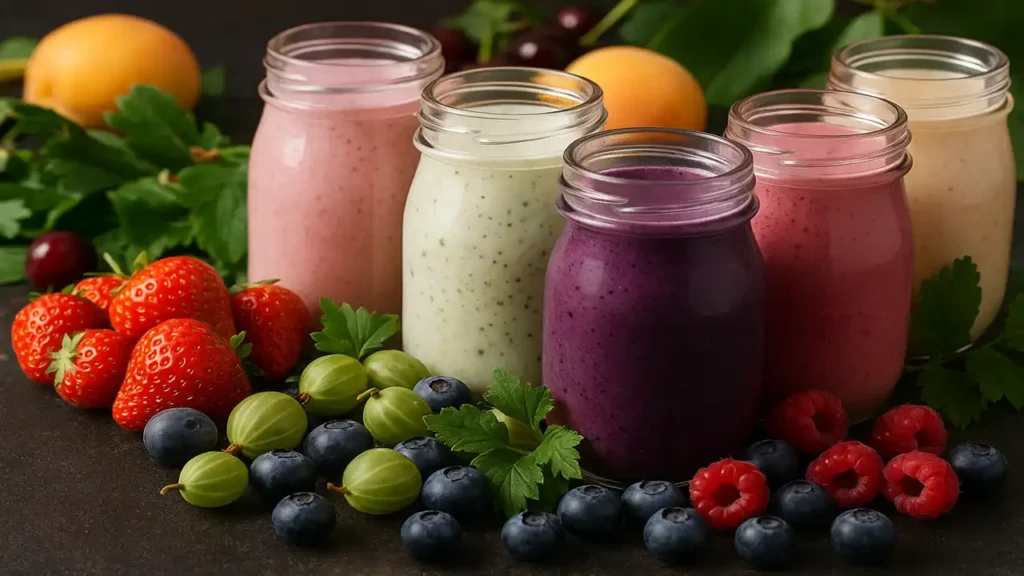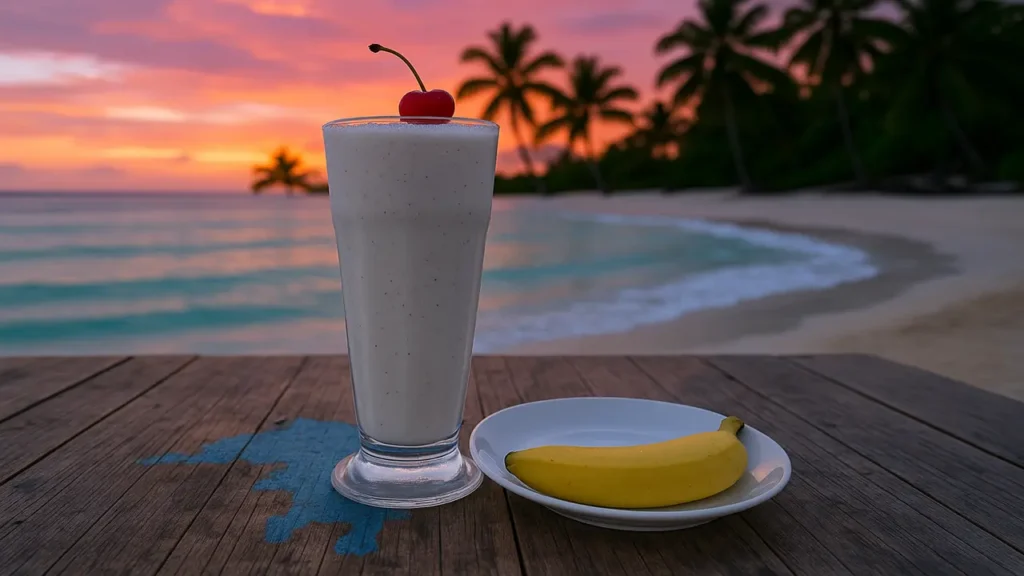7 Dangerous Ayurvedic Food
Ayurveda, the ancient holistic health system of India, emphasizes not only the significance of what we consume but also how different foods are combined. Central to Ayurvedic dietary guidance is the concept of “Viruddha Ahara,” which refers to incompatible or improper food combinations that are believed to disrupt digestive processes and overall health.
Increasingly, modern research aligns with Ayurveda’s warnings, demonstrating connections between Viruddha Ahara and a variety of health issues ranging from digestive disturbances to chronic inflammatory diseases. This report examines seven of the most dangerous Ayurvedic food combinations, offering insight into the rationale for their avoidance, statistical data on their prevalence and associated symptoms, and an overview of the physiological consequences resulting from improper food pairing.
What is Viruddha Ahara?
- Definition: “Viruddha” means incompatible or harmful; “Ahara” means food. Taken together, Viruddha Ahara refers to food combinations that disturb digestion, create toxins (“ama”), and disrupt bodily balance.
- Ayurvedic Principle: Viruddha Ahara weakens digestive fire (Agni), resulting in improper digestion and assimilation, dosha aggravation, and eventual tissue (dhatu) abnormalities.
- Modern Validation: Scientific studies confirm that certain incompatible food combinations impair digestion, trigger inflammation, and can contribute to chronic diseases.
Here are 7 dangerous ayurvedic food combinations to avoid, along with reasons based on Ayurvedic principles:
Milk and Fish:

Why Milk and Fish Should Not Be Consumed Together – Ayurvedic Perspective
- Milk is cooling and sweet in nature.
- Fish is heating and often salty.
- The opposing thermal effects of milk (cooling) and fish (heating) create an imbalance in the body.
- This imbalance primarily affects Pitta dosha, leading to excessive heat in the body.
- When these foods are consumed together, they disturb digestion and the body’s internal harmony.
- The heating effect of fish clashes with the cooling nature of milk, leading to digestive confusion.
- This can result in poor digestion, causing symptoms like bloating, gas, and indigestion.
- The digestive fire (Agni) is weakened, making it harder for the body to break down food properly.
- Improper digestion leads to the formation of ama (toxins), which disrupts the body’s metabolic processes.
- Ama can enter the bloodstream, leading to skin diseases like rashes, acne, or eczema.
- The vitiation of the blood (rakta dhatu) caused by this combination may contribute to inflammation and other chronic conditions.
- The imbalance may also cause obstruction of body channels (srotas), disrupting the flow of nutrients and waste.
- Obstruction in the body’s subtle channels weakens the immune system and leads to systemic issues.
- Ayurvedic texts frequently caution against combining fish and milk, as it is seen as an example of viruddha ahara (incompatible food).
- To avoid these issues, separate consumption of milk and fish is recommended, with a gap of at least 2-3 hours between them.
Milk and Sour Fruits:

Why Milk and Sour Fruits Should Not Be Consumed Together – Ayurvedic Perspective
- Milk is heavy, cooling, and sweet in nature.
- Sour fruits like lemons, oranges, pineapples, and mangoes are acidic and heating.
- Mixing these creates an incompatible combination (viruddha ahara) in Ayurveda.
- The acidity of sour fruits curdles milk in the stomach.
- Curdled milk becomes difficult to digest.
- This can cause gas, bloating, and indigestion.
- Undigested food leads to the formation of ama (toxins).
- Ama weakens digestive fire (Agni) and upsets dosha balance.
- Toxins can block body channels (srotas), affecting bodily functions.
- The curdled mixture irritates the stomach and slows metabolism.
- Regular consumption may lead to food sensitivities or allergies.
- Skin problems like acne, rashes, or inflammation may occur.
- Immunity may weaken over time due to toxin buildup.
- Ayurveda advises keeping fruit and milk intake separate.
- A 1.5 to 2-hour gap is recommended between consuming milk and sour fruits.
- Modern science also warns against combining acidic fruits with dairy due to digestion issues.
Honey and Ghee (Equal Proportions):

Why Mixing Honey and Ghee in Equal Quantities Is Considered Toxic – Ayurvedic Perspective
- Honey is heating, light, and drying in nature.
- Ghee is cooling, heavy, and moisturizing.
- Ayurveda considers these properties opposing in effect.
- When mixed in equal quantities by weight, they create Matra Viruddha (dose-based incompatibility).
- Equal parts of honey and ghee disturb Agni (digestive fire).
- This combination is believed to produce toxins (ama) during digestion.
- Toxins formed from incompatible mixing can enter the bloodstream.
- This may lead to digestive issues, such as bloating, gas, and acidity.
- Over time, it may cause metabolic disturbances and systemic toxicity.
- The imbalance can affect doshas, particularly Pitta and Kapha.
- It may also contribute to skin diseases, allergies, and sluggish digestion.
- Traditional Ayurvedic texts, including Charaka Samhita, warn against this mixture.
- However, unequal mixing (like a small amount of honey in more ghee or vice versa) is generally considered safe.
- Heating honey (even alone) is also discouraged in Ayurveda due to toxic changes.
- For safety, avoid combining honey and ghee in equal proportions by weight (not volume).
- This guideline is based on longstanding Ayurvedic observations, not just taste or texture.
Banana and Milk:

Why Banana and Milk Should Not Be Consumed Together – Ayurvedic Perspective
- Banana and milk is a popular combination, especially in smoothies and desserts.
- Despite its popularity, Ayurveda considers it viruddha ahara (incompatible food).
- Milk is sweet, cooling, and heavy in nature.
- Bananas are sweet in taste, but have a sour vipaka (post-digestive effect).
- This conflict in post-digestive actions can disturb the digestive process.
- The combination may diminish Agni (digestive fire), slowing down metabolism.
- Improper digestion leads to the formation of ama (toxins) in the gut.
- These toxins may enter the bloodstream, causing systemic imbalances.
- Regular intake can lead to allergic reactions, skin issues, or sinus congestion.
- Some people may experience heaviness, bloating, or sluggishness after consuming this mix.
- The combination may also increase Kapha dosha, leading to mucus formation.
- Increased Kapha is linked to respiratory issues, such as colds, coughs, or sinusitis.
- Toxins formed from this mix may also trigger gut-related sensitivities or food intolerances.
- Traditional Ayurvedic texts advise not mixing fruits with dairy, especially bananas.
- While modern nutrition emphasizes calories and macros, Ayurveda looks at energetic compatibility and long-term balance.
- For better digestion, bananas and milk should be consumed separately, with a gap of at least 2 hours.
Melons with Other Foods:

Why Melons Should Be Eaten Alone – Ayurvedic Perspective
- Melons like watermelon, cantaloupe, and musk melon are light and watery in nature.
- They are quick-digesting fruits that move rapidly through the digestive tract.
- Combining melons with slower-digesting foods causes a mismatch in digestion time.
- Slower foods delay the passage of melon in the stomach.
- This delay causes fermentation of the melon in the gut.
- Fermentation leads to the formation of gas, bloating, and discomfort.
- The process can also result in the buildup of ama (toxins) in the body.
- Fermented food residue can disrupt the balance of Agni (digestive fire).
- This may lead to digestive disturbances such as acid reflux or loose stools.
- Melons are cooling and hydrating, while other heavy foods (like grains or dairy) may be heating or heavy.
- This incompatibility in nature and digestion speed causes internal confusion.
- Ayurveda recommends eating melons on an empty stomach or alone.
- Best time to consume melons is in the morning or as a snack between meals.
- Avoid mixing melons with milk, grains, starchy foods, or proteins.
- Even in fruit salads, melons should be kept separate from other fruits.
- Following this principle supports light, clean, and efficient digestion.
Yogurt and Fish:

Why Yogurt and Fish Should Not Be Consumed Together – Ayurvedic Perspective
- Yogurt is cooling, heavy, and acidic in nature.
- Fish is heating, light, and often salty.
- This opposition in qualities creates a digestive conflict in the body.
- Yogurt’s cooling effect clashes with fish’s heating nature, disrupting the digestive process.
- The combination diminishes Agni (digestive fire), slowing down digestion.
- Poor digestion leads to the formation of ama (toxins), which disrupt the body’s internal balance.
- Toxins can enter the bloodstream, potentially causing inflammation and skin issues.
- Ama obstructs body channels (srotas), affecting nutrient absorption and waste elimination.
- This obstruction may lead to digestive discomfort like bloating, gas, or indigestion.
- Over time, this combination can lead to chronic digestive issues and immune system weakness.
- Yogurt and fish are both heavy and rich foods, making digestion even more challenging.
- Ayurveda recommends avoiding combining dairy products (especially yogurt) with fish due to their opposing energies.
- Skin problems, allergies, and food sensitivities are common side effects of this incompatible combination.
- Traditional wisdom advises keeping a gap of at least 2–3 hours between consuming yogurt and fish.
- Modern dietary advice also suggests eating yogurt and fish separately for optimal digestion and health.
Milk and Salty Foods:

Why Milk and Salt Should Not Be Consumed Together – Ayurvedic Perspective
- Milk is cooling, heavy, and sweet in nature.
- Salt is heating, light, and drying in nature.
- The antagonistic qualities of milk (cooling) and salt (heating) create an imbalance in the body.
- Salt’s heating properties can curdle milk, altering its digestibility.
- This curdling effect can lead to poor digestion, causing gas, bloating, and indigestion.
- When consumed together, milk and salt disrupt digestive fire (Agni), making it difficult for the body to process food.
- Improper digestion can result in the formation of ama (toxins).
- Ama weakens the body’s natural defense mechanisms, leading to skin issues such as acne, rashes, or eczema.
- Incompatibility of milk and salt can also cause weak digestion, affecting overall health and energy levels.
- Salty milk-based curries are a common dish, but they are cautioned against in Ayurveda.
- The curdled milk caused by salt can create an environment where toxins accumulate, leading to long-term health problems.
- The combination can also block body channels (srotas), impairing the flow of nutrients and elimination of waste.
- Salt also tends to increase Pitta dosha, leading to excessive heat in the body when combined with milk.
- Ayurveda advises that milk should be consumed without salt to maintain digestive harmony.
- For better digestion, it’s recommended to consume milk separately or with sweeteners like honey or sugar.
7 Dangerous Ayurvedic Food Avoid in 2025
Below is a table summarizing the 7 dangerous food combinations, their reasons for incompatibility, and potential health effects, derived from multiple sources:
| Combination | Reason for Incompatibility | Potential Health Effects |
|---|---|---|
| Milk and Fish | Milk is cooling, fish is heating | Skin diseases, digestive issues, channel obstruction |
| Milk and Sour Fruits | Sour fruits curdle milk in stomach, conflicting properties | Indigestion, toxin formation, digestive discomfort |
| Honey and Ghee (Equal) | Equal quantities create toxicity due to opposing potencies | Digestive issues, toxin accumulation |
| Banana and Milk | Sweet banana with sour post-digestive effect conflicts with milk | Toxins, allergies, sinus congestion |
| Melons with Other Foods | Melons digest quickly, causing fermentation with slower foods | Gas, bloating, digestive fermentation |
| Yogurt and Fish | Cooling yogurt and heating fish disrupt digestive fire | Poor digestion, toxin creation, health issues |
| Milk and Salty Foods | Antagonistic qualities, salt can curdle milk | Skin problems, weak digestion, health complications |
Conclusion
Understanding and avoiding these 7 dangerous ayurvedic food combinations can significantly enhance digestive health and prevent toxin buildup, aligning with Ayurvedic principles. As dietary habits evolve in 2025, integrating these guidelines can support holistic well-being, especially in a world increasingly focused on natural and traditional healing practices.
